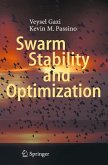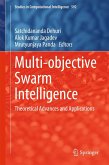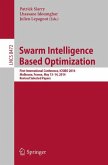This book offers a comprehensive analysis of the theory and tools needed for the development of an efficient and robust infrastructure for the design of collaborative patrolling unmanned aerial vehicle (UAV) swarms, focusing on its applications for tactical intelligence drones. It discusses frameworks for robustly and near-optimally analyzing flocks of semi-autonomous vehicles designed to efficiently perform the ongoing dynamic patrolling and scanning of pre-defined "search regions". It discusses the theoretical limitations of such systems, as well as the trade-offs between the systems' various economic and operational parameters.
Current UAV systems rely mainly on human operators for the design and adaptation of drones' flying routes. However, recent technological advances have introduced new systems, comprised of a small number of self-organizing vehicles, manually guided at the swarm level by a human operator.
With the growing complexity of such man-supervised architectures, it is becoming increasingly harder to guarantee a pre-defined level of performance. The use of large scale swarms of UAVs as a combat and reconnaissance platform therefore necessitates the development of an efficient optimization mechanism of their utilization, specifically in the design and maintenance of their patrolling routes.
The book is intended for researchers and engineers in the fields of swarms systems and autonomous drones.
Current UAV systems rely mainly on human operators for the design and adaptation of drones' flying routes. However, recent technological advances have introduced new systems, comprised of a small number of self-organizing vehicles, manually guided at the swarm level by a human operator.
With the growing complexity of such man-supervised architectures, it is becoming increasingly harder to guarantee a pre-defined level of performance. The use of large scale swarms of UAVs as a combat and reconnaissance platform therefore necessitates the development of an efficient optimization mechanism of their utilization, specifically in the design and maintenance of their patrolling routes.
The book is intended for researchers and engineers in the fields of swarms systems and autonomous drones.
"The book is a solid attempt to formally characterize the properties of domains and the swarms of robots operating in them. The algorithms are often described with figures that show sample environments and how the operations progress over time. This provides a good understanding of how the algorithms work." (M. Gini, Computing Reviews, January, 2019)









